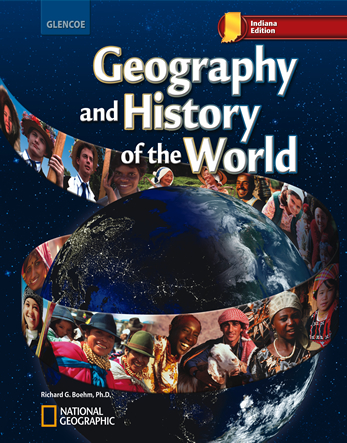 
Geography and History of the World © 2010 Indiana EditionChapter 27:
Cultural Geography of East AsiaWeb Activity Lesson Plans"East Asian Customs" Introduction
Students have read about the differences, similarities, and common threads among
the cultures of the countries in East Asia. In this activity they will learn about
concepts that underlie these cultures and ways in which the cultures manifest
themselves. They will study ancient values by which today's East Asians continue
to live. They will also learn about customs that are popular in the cultures of
some East Asian countries.
Lesson Description
Students will use information from the Asia Society's AskAsia Web site to explore
the cultures of China, Japan, and Korea. They will answer four questions and then
use what they have learned to write a letter of introduction to a Japanese exchange
student.
Instructional Objectives - Students will be able to discuss how traditions influence daily life in
several East Asian countries.
- Students will be able to apply what they have learned to write an essay explaining the cultural differences between Japanese and American New Year’s celebrations.
Applied Content Standards
Standard 10: The geographically informed person knows and understands the characteristics,
distribution, and complexity of Earth's cultural mosaics.
Student Web Activity Answers- China has simplified some of the most complex or frequently used characters
by reducing their number of "strokes," or lines, in order to make
them easier to learn to read and write. Some of the least frequently used
characters have been merged into a single character, and an intensive campaign
to promote Mandarin—the standard dialect—as the national language
has been undertaken. Pinyin is a standard spelling system that uses the Roman
alphabet to spell the pronunciation of Chinese characters. It has been adopted
to replace a variety of older, unstandardized romanization systems.
- Many South Koreans feel that Japan has misrepresented or omitted details of the relationship between Korea and Japan throughout history.
- Many people pursue a lesson or a hobby on the second day of New Year’s in Japan. They believe that practicing an activity on the second day of the New Year will improve their skill in that activity.
- In Korean legends, deities and animals wanted to become human and live on Earth. Koreans value longevity. A Korean proverb refers to “preferring an earthly field of dung to the wonders of the nether world.”
- Students’ essays will vary, but should compare and contrast particular traditions practiced in their home or community on New Year’s with those practiced in Japan.
 |  |
|


















